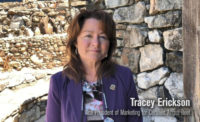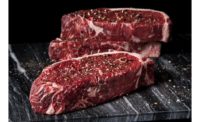President at Certified Angus Beef John Stika spoke with editor-in-chief Andy Hanacek about all the contributions to setting a record one billion pounds in sales. Plus, Stika discusses what the future may hold with uncertain economic predictions.
Andy Hanacek: John, thanks for joining us for a few minutes here. Thanks for taking the time. First, I wanted to talk really quickly and get an update about Certified Angus Beef here. I was out at the conference in the fall, and you guys hit a pretty big milestone in 2016, a billion pounds. Just give a real quick overview of that and what that means for you guys.
John Stika: Well, 2016 was a big year for us. Hitting a billion pounds was significant for a number of reasons the least of which is the fact that it is a numeric number a billion pounds. The real excitement is the dynamics of the things to get there. We saw growth in every category of our business on the sales and merchandising side. International was up. Foodservice was up. Retail was up huge after six years of relatively flat to declining sales given price and supply dynamics that they were dealing with that challenged feature activity over the last six year period. Those were the things that were exciting on the sales side, but what was interesting and really neat to see and what really allowed us to have that kind of year was the reaction that producers have taken over the course of time. As we saw herd liquidation take place over the last several years here. The herd is finally rebuilt. We saw all those cattle come to the marketplace. It was that supply of high quality beef that really gave us the opportunity to experience the kind of growth and success that the brand did through its 18,000 licensees around the world. Highest quality set of cattle we’ve ever seen coming in the largest numbers we’ve ever seen as a brand, so the number is really cool. It makes for a nice headline, but the real story is how the production side and the demand side at the end-user level really came together to allow this brand to have that kind of success.
Hanacek: On the processor side, would that billion pounds really make a difference for them as well, and if so, how?
Stika: I think what it does is it talks about how no one does anything by chance in this business. It’s a business of intention, especially if you are going to be successful at it. You’ve got to have a plan. You’ve got to have a focus on what’s going to drive the business, and what is ultimately going to pay the bills. I would say that our processors clearly were able to be successful. As you look at our packer processors, they had the supply that the end-users were demanding. When you look at how producers knew to produce it, it was economic signals coming back from the consumer through the processor and the production agriculture indicating the need for more high quality Angus cattle. When you look at the manufacturing side as well, our value-added products business was up almost nine percent, really a record year for value-added products. So we see those convenience items and value-added products continue to grow in demand, so what we see is that this idea of taking a low quality product and manufacturing it into something better and value-added. What we are beginning to see is the value-added component of our business is still just as demanding on high quality materials, and we’re seeing our processors and manufacturers respond accordingly to that economic signal and demand from the consumer base.
Hanacek: We’ve got a bit of uncertainty coming up. Some economists have said as long as a year ago that we may have a dip in business, the economy and the world in general. What are you seeing in the overall business landscape, particularly in the beef business and particularly around the Angus that you guys drive?
Stika: We are not immune to large scale economic direction that happens within the global marketplace and so forth, but at the same time, we are a very specific product. What we’ve seen so far this calendar year has really been a continuation of what we have experienced last year. We started our fiscal year back in October [2016] and we’re up almost 14 percent this year over last. So October, which was the first month of our fiscal year was a record month, the highest month in sales we’ve ever had as a brand. So that demand that we continue to see through 2016 just continued through the beginning of our fiscal year and the calendar year 2017. What we see continue to drive home is the fact that it is not just price. It’s price in relation to value. These higher quality beef products that assure an end-user or a consumer that they are going to get their money’s worth when they put those dollars down to buy their product, that continues to be a big drawing card for folks to be attracted to buying Certified Angus Beef. That’s a consistent message we have learned over the last decade of growth that we’ve experienced, and it is something that we continue to see moving forward, and that’s across all segments both domestic and international.
Hanacek: I’ve heard that from a couple different areas. It seems like the recession trained consumers not to be cheap, not to bury their money in their backyards, but to put their money if they are going to spend it to good use and at least get the top quality stuff, whatever stuff you are talking about, be a home, a car, whatever consumable food. So that makes sense.
Stika: We see that at all levels whether that be higher priced items or lower priced items. It is price in relation to value and the level of expectation that I have. If my expectation is high quality beef, then obviously I am prepared to pay more, but I expect more. If my target for a certain purchase is something of mid-tier or lower quality, well, again I still apply that same price-value relationship depending on what my expectation is.
Hanacek: Thanks for your time John. I don’t want to take too much of it up, and I just wanted to get a quick update. That was fantastic. Congratulations on the milestone, the number or theoretical, either way. Congratulations on the start of the 2017 year. I’m sure we’ll be talking about great things at the end of the year too.
Stika: Thank you very much. Our brand is a component of the larger industry. This brand is only successful when all the folks are part of it when the processing, the manufacturing segment as well as production agriculture are successful, so thank you very much for the opportunity to share that.


Report Abusive Comment